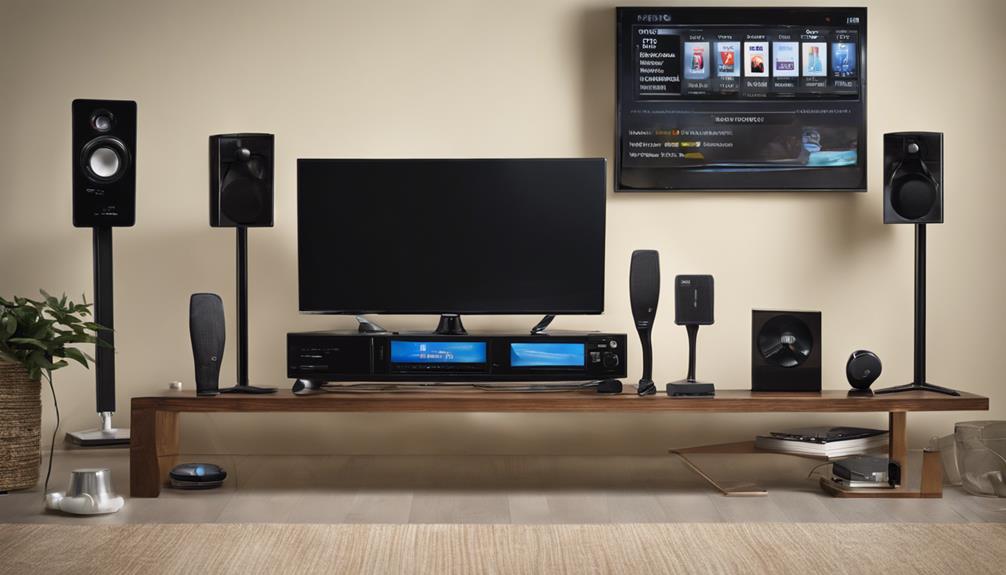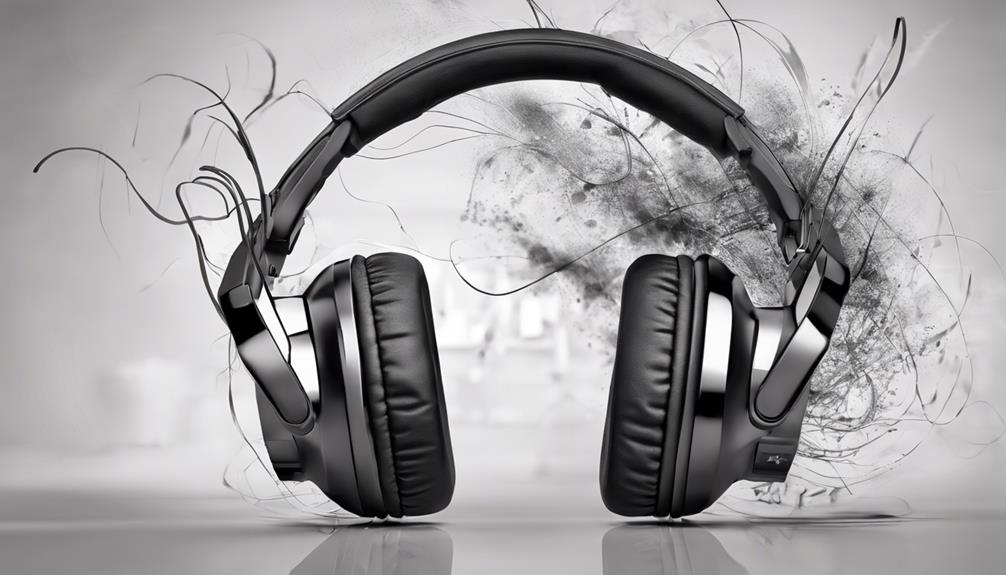Did you know that over 48 million people in the United States have reported experiencing different degrees of hearing loss?
Assistive listening devices (ALDs) play a crucial role in enhancing communication for individuals facing these challenges.
From small amplifiers to advanced wireless systems, ALDs help bridge the gap between sound and perception.
Let's explore the world of ALDs and how they contribute to improving the quality of life for those with hearing impairments.
Key Takeaways
- ALDs like hearing loops and FM systems enhance sound reception for individuals with hearing impairments.
- Telecoils and Bluetooth systems improve audio clarity and connectivity with telecommunication devices.
- Hardwired and wireless ALDs offer portability and tailored amplification options in various settings.
- Personalized listening experiences through ALDs promote independence and effective communication for users.
Types of ALDs
When exploring the various types of ALDs available, it becomes evident that each system offers unique features and benefits catered to specific listening environments and needs. ALDs encompass a range of technologies designed to enhance sound perception for individuals with hearing impairments.
Telecoil-equipped hearing aids are a common type that can connect directly to hearing loops, which are systems utilizing magnetic fields to transmit audio signals effectively in various settings.
FM systems operate wirelessly through radio waves, making them suitable for group events like meetings or classrooms, both indoors and outdoors. Infrared Systems use light beams to transmit sound, ensuring privacy and are ideal for places like churches or theaters.
Personal Amplified Systems are portable devices that provide individual amplification for one-on-one conversations or TV listening. Bluetooth Systems, compatible with Bluetooth-enabled hearing aids, offer versatility for indoor and outdoor use by transmitting sound via Wi-Fi technology.
Each of these ALDs serves a distinct purpose in improving auditory experiences for those with hearing challenges.
Benefits of ALDs

Exploring the benefits of ALDs sheds light on the significant advantages these devices offer individuals with hearing impairments, enhancing their communication experiences and breaking down barriers effectively.
ALDs play a crucial role in improving the reception of telecommunication and media signals for individuals with hearing loss, ensuring they don't miss important information. These devices are particularly beneficial for hard of hearing individuals, as research suggests a 15-25 dB volume increase is essential for effective communication.
Furthermore, ALDs work synergistically with hearing aids and cochlear implants, extending their effectiveness and providing additional support in challenging listening environments. Personal ALDs are tailored to increase the loudness of specific sounds, aiding individuals in adverse listening conditions where background noise or distance from the sound source may hinder comprehension.
Hardwired Devices
In the realm of assistive listening devices, hardwired options stand out for their use of cords in sound transmission, offering affordability and portability in short-distance settings. These devices excel in providing temporary amplification, making them ideal for situations like hospitals or cars where simplicity and ease of use are key.
The cord length limitations of hardwired ALDs, however, restrict mobility and seating arrangements, rendering them less suitable for larger venues such as classrooms or tour groups.
Despite these limitations, hardwired devices are incredibly effective in places like restaurants, where listener-to-speaker distances are short. By enhancing sound clarity and volume for individuals with hearing loss, they improve communication in everyday scenarios.
It's important to note that hardwired ALDs aren't typically recommended for settings requiring greater mobility or where longer cord lengths may hinder user movement. Their simplicity and affordability make them a practical choice for short-distance settings where temporary amplification is needed.
Wireless Devices
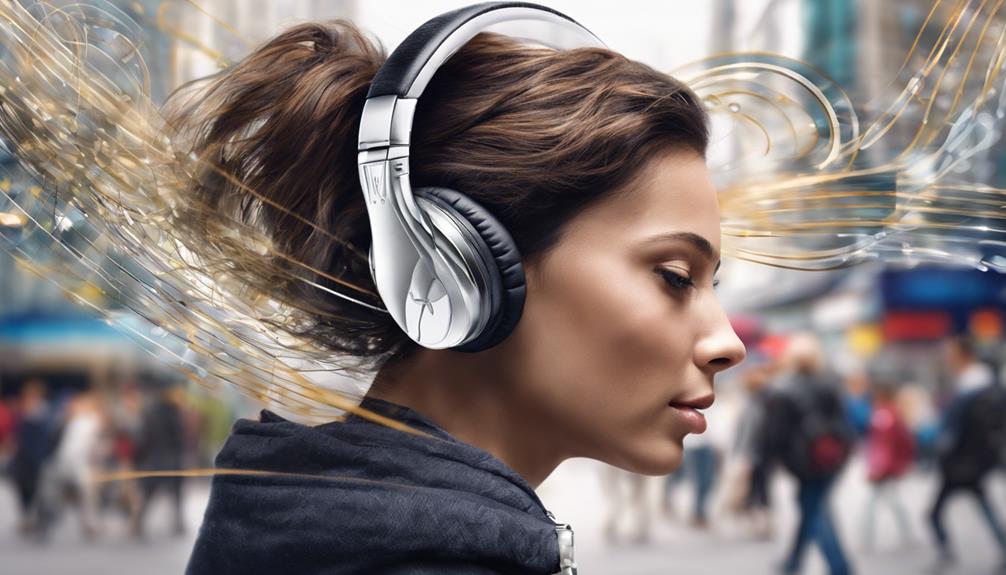
Wireless assistive listening devices offer users numerous benefits, including enhanced portability and flexibility in usage. These devices come in various types and offer different connectivity options, catering to diverse user preferences and needs.
Understanding the benefits, types, and connectivity options of wireless devices is crucial for individuals seeking improved auditory assistance.
Benefits of Wireless
When considering assistive listening devices, the advantages of wireless technology become apparent in their ability to enhance user mobility and connectivity. Wireless ALDs utilize various transmission methods such as FM radio waves, infrared light, or electromagnetic energy. This versatility offers users portability based on signal strength and device range, granting increased flexibility. However, the effectiveness of these devices can be influenced by the security of the signal and the line of sight between the transmitter and receiver. Here is a table highlighting the benefits of wireless ALDs:
| Benefits | Description |
|---|---|
| Enhanced Mobility | Allows users to move freely without being tethered by cords |
| Seamless Connectivity | Provides continuous and stable connection between the transmitter and receiver |
| Versatile Options | Offers different transmission methods to suit various environments |
Types of Devices
Considering the diverse applications of wireless technology in assistive listening devices, exploring the various types of devices available can provide valuable insights into optimizing user experience and accessibility.
- FM Radio Waves: Utilized for long-range transmissions, FM radio waves are popular for outdoor events and large venues due to their ability to cover extensive distances.
- Infrared Light: Ideal for short-range communication in settings like classrooms or meeting rooms, infrared light ensures secure and interference-free signal transmission.
- Electromagnetic Energy: Offering a balance between range and security, electromagnetic energy is commonly used in environments where a moderate coverage area is needed.
- Transmitter and Receiver: These components work in tandem to ensure the efficient transmission of sound from the source to the listener, enhancing the overall listening experience.
Connectivity Options
Exploring the diverse connectivity options in assistive listening devices opens up a world of possibilities for seamless and enhanced audio experiences. Wireless devices utilize different transmission methods like FM radio waves, infrared, or electromagnetic energy to deliver amplified sound without the constraints of physical cords. The choice of transmission method impacts signal strength and range, influencing the device's effectiveness. Factors such as signal security and the necessity of a clear line of sight between the transmitter and receiver also play crucial roles in ensuring optimal performance. Wireless technologies in ALDs prioritize portability, allowing users the freedom to move around while receiving clear and amplified audio tailored to various listening environments.
| Transmission Methods | Signal Strength | Clear Line of Sight |
|---|---|---|
| Infrared | Moderate | Required |
| FM Radio Waves | Strong | Not Required |
| Electromagnetic Energy | Variable | Recommended |
Hearing Loop Systems

Hearing loop systems, comprised of copper wire encircling a room and linked to a sound system, play a crucial role in providing direct access to assistive listening systems for individuals with hearing impairments. These systems create an electromagnetic field that interacts with telecoils found in hearing aids and cochlear implants, allowing users to wirelessly receive audio signals from the hearing loop.
- Induction Loop Technology: Hearing loop systems use induction loop technology that transmits sound electromagnetically to telecoils in hearing devices.
- Direct Connection to Hearing Aids: Telecoils in hearing aids and cochlear implants pick up the audio signal directly from the hearing loop, enhancing the listening experience for individuals with hearing loss.
- Cost-Effective Solutions: Hearing loops offer a cost-effective way to improve accessibility in large public venues and private spaces, ensuring individuals with hearing impairments can participate fully.
- Efficient Access to Assistive Listening Systems: These systems provide efficient and direct access to assistive listening services, making communication clearer and more accessible for users.
FM Systems
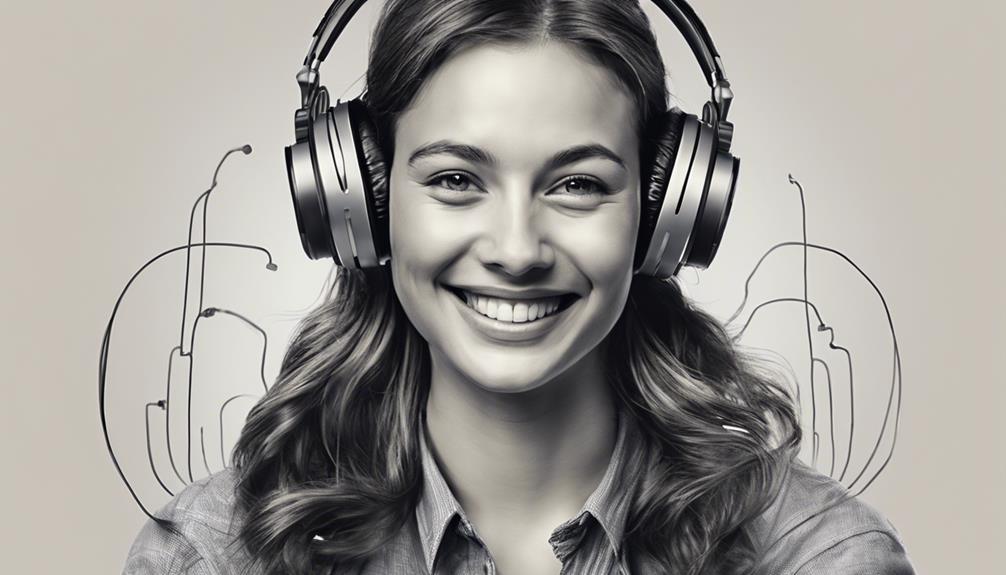
FM systems are versatile devices that transmit sound wirelessly using radio waves, ensuring clear reception in various settings. These systems are commonly utilized in group meetings, churches, and classrooms to enhance speech clarity for individuals with hearing loss.
Whether indoors or outdoors, FM systems offer improved sound amplification and can be used with or without hearing aids for maximum benefit.
FM System Basics
Utilizing radio waves for direct sound transmission to a listener's receiver, FM systems are widely employed in various settings such as classrooms, theaters, and group environments to enhance listening experiences. These systems offer several benefits:
- Enhanced Speech Clarity: FM systems help in reducing background noise interference, leading to clearer speech perception for the listener.
- Suitable for Hearing Loss: Particularly beneficial for individuals with hearing impairments, including those with cochlear implants.
- Portable Solution: FM technology provides a convenient and adaptable way to amplify sound tailored to individual needs.
- Versatile Applications: From educational settings to entertainment venues, FM systems cater to diverse environments requiring improved sound delivery.
Benefits of FM
Expanding on the advantages outlined, the practical benefits of FM systems in various settings are noteworthy. FM systems utilize radio waves to deliver sound directly to a receiver, ensuring clear and consistent sound quality. By reducing background noise, these systems enhance speech understanding, particularly beneficial in educational settings like classrooms and lecture halls. Individuals with hearing loss benefit significantly from FM systems, as they improve the ability to hear and comprehend spoken information effectively.
Moreover, FM systems can seamlessly integrate with hearing aids or cochlear implants, offering a comprehensive listening experience. In essence, FM technology plays a crucial role in mitigating communication barriers and enhancing auditory access for individuals with hearing impairments.
FM Usage Tips
When using FM systems for assistive listening, adjusting the receiver's volume to match your specific hearing requirements is key to optimizing your listening experience. Here are some tips for maximizing the benefits of FM systems:
- Reduce Background Noise: Position yourself in a way that minimizes interference from surrounding noises, allowing the FM system to deliver clear sound directly to your ears.
- Regularly Check Battery Levels: Ensure that the receiver has sufficient battery power to maintain a consistent audio level and prevent sudden disruptions.
- Utilize Integrated Technologies: Explore how FM systems can work in conjunction with other assistive listening devices to enhance your overall listening capabilities.
- Experiment with Volume Settings: Fine-tune the adjustable volume on your receiver to find the optimal level for improved speech understanding and enhanced listening comfort.
Infrared Systems
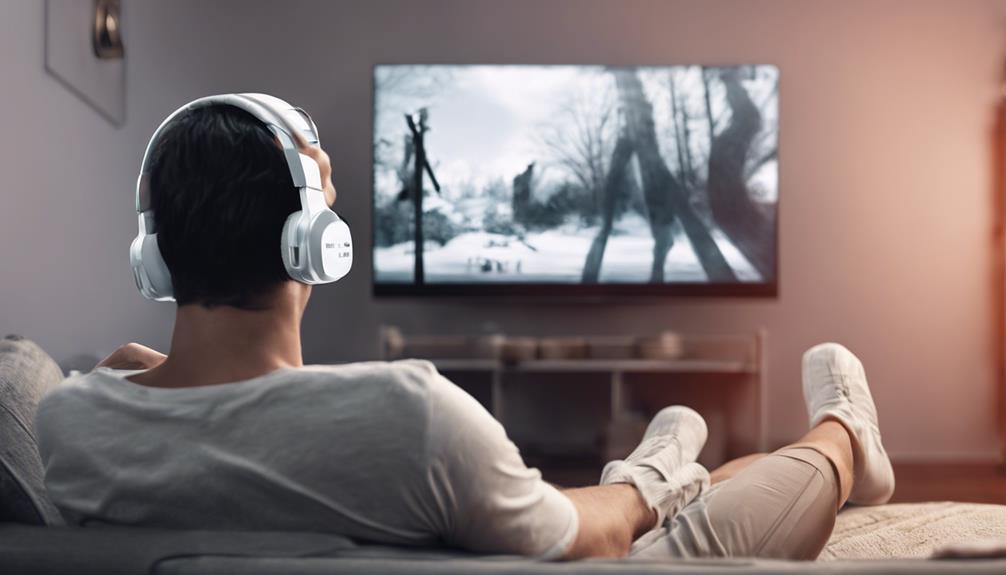
Infrared systems transmit sound wirelessly via invisible light beams, making them an excellent choice for indoor environments like churches and theaters. These systems are secure and interference-free, providing a reliable listening experience.
Infrared technology ensures privacy by confining the signal to the room, making it an ideal option for situations where confidentiality is important. Infrared devices are commonly used for TV listening in homes, offering individuals the opportunity to enjoy their favorite programs without disturbing others.
The advantage of using invisible light beams for transmission means that the signal is contained within the designated area, minimizing the risk of signal interception or leakage. This makes infrared systems a preferred choice for applications where confidentiality and privacy are paramount.
Whether you're in a crowded theater or enjoying a show at home, infrared systems provide a seamless listening experience that's both reliable and secure.
Telecoil or T-coil
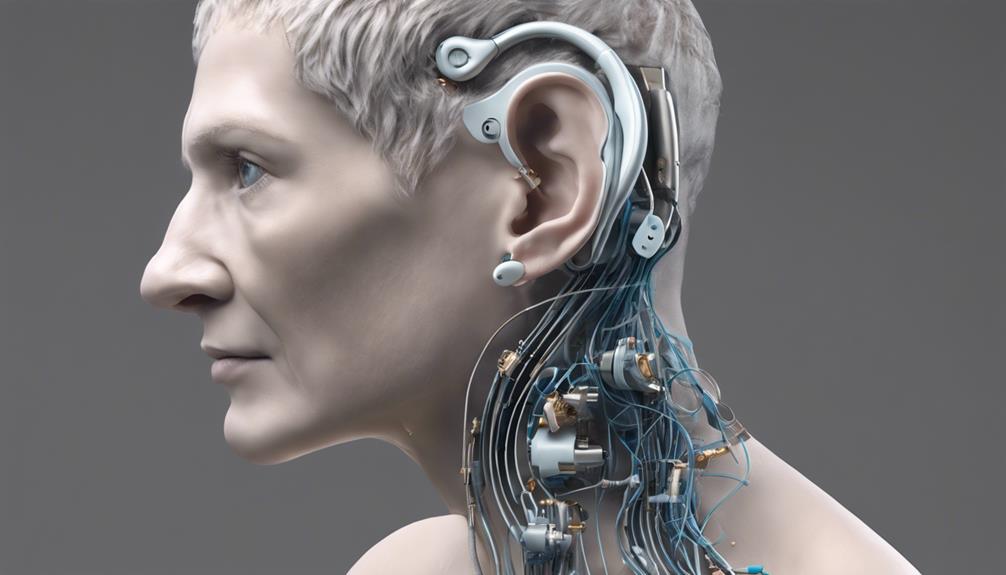
Moving from the discussion on Infrared Systems, the implementation of Telecoil or T-coil technology revolutionizes the accessibility and personalized listening experience for individuals with hearing loss. Telecoils, also known as T-coils, are small coils of wire integrated into hearing aids and cochlear implants. These coils capture electromagnetic signals produced by hearing loop systems, enabling the direct delivery of sound to the user's ear.
Here are four key points about telecoil technology:
- Essential Component: Telecoils are crucial for connecting individuals with hearing impairments to assistive listening systems while minimizing background noise interference.
- Seamless Switching: Users can easily transition between regular hearing aid mode and telecoil mode to access hearing loop systems in various environments.
- Personalized Experience: Telecoil technology allows for a tailored listening experience, catering to the specific needs and preferences of the user.
- Improved Accessibility: By leveraging electromagnetic signals, telecoils enhance accessibility by providing clearer sound transmission directly to the hearing device.
Assistive Devices for TVs
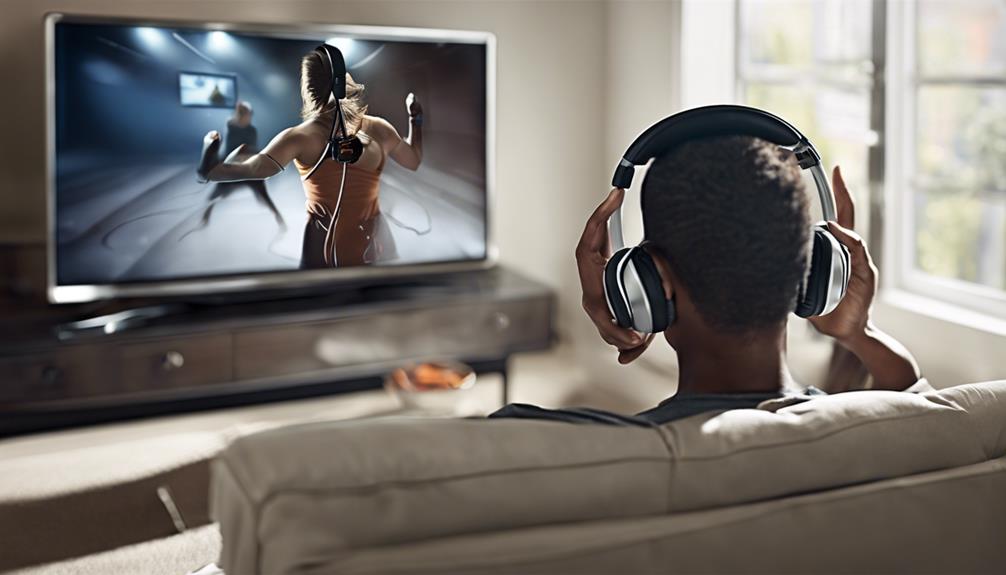
TV hearing devices, such as TV amplifiers and wireless TV headphones, offer individuals with hearing impairments the opportunity to enjoy television programs with enhanced sound quality.
Captioned phones with real-time captioning provide added support by displaying TV dialogue for improved comprehension.
Devices like TV Ears wireless headsets are designed to prevent sound distortion and ensure clear audio, making TV viewing more enjoyable for those with hearing loss.
TV Hearing Devices
When seeking enhanced audio clarity and personalized volume control for television viewing, individuals with hearing impairments often turn to TV hearing devices such as amplifiers and wireless headsets. These devices offer a range of benefits, including:
- Improved Sound Quality: TV amplifiers and wireless headsets provide clearer sound, reducing sound distortion often experienced by individuals with hearing loss.
- Independent Functionality: They work independently of hearing aids, enhancing the TV-watching experience without interfering with other devices.
- Wireless Connectivity: Popular options like TV Ears offer wireless connectivity, allowing users to move freely while watching TV.
- Personalized Volume Control: Users can adjust the volume to their preference, making it easier to hear dialogue and enjoy shows without disturbing others.
Wireless TV Headphones
Enhancing the television viewing experience for individuals with hearing impairments, wireless TV headphones provide clear sound directly to the user without disrupting others in the vicinity. These Wireless TV headphones use advanced technology to transmit audio from the TV to the headphones wirelessly, allowing users to enjoy personalized sound levels.
Especially beneficial for individuals with hearing loss, these devices amplify sound, making dialogues and background noises clearer. Users can easily adjust the volume levels to their comfort, enhancing their enjoyment and understanding of TV content.
With Wireless TV headphones, individuals can immerse themselves in their favorite shows or movies without missing out on important details, ensuring a more inclusive and engaging viewing experience.
Where to Buy ALDs
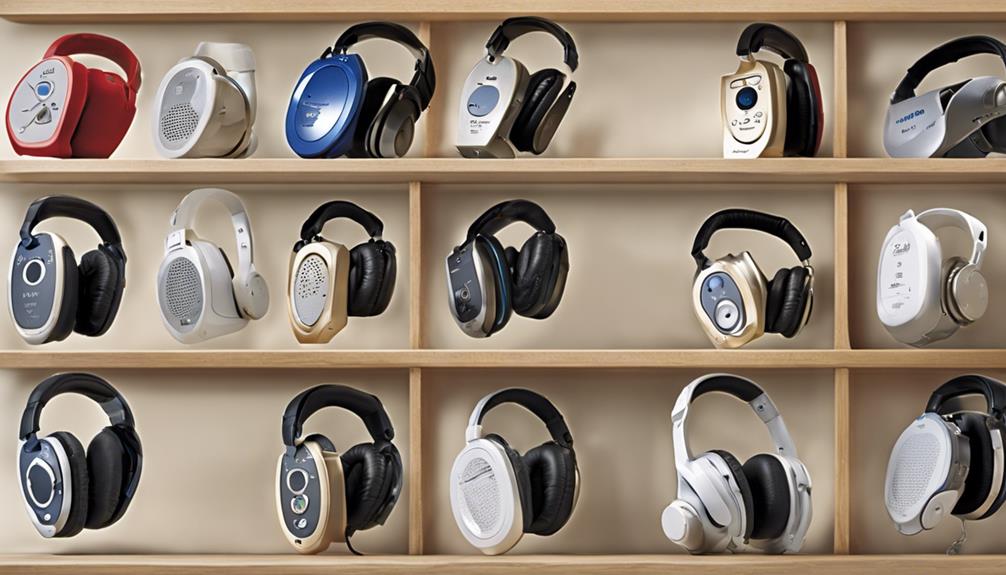
For individuals seeking to purchase Assistive Listening Devices (ALDs), exploring specialty retailers that offer a wide range of these devices is essential. When looking to buy ALDs, consider the following:
- Check Specialty Retailers: Look for stores that specialize in assistive listening devices as they'll likely have a diverse selection to choose from.
- Consult Vendor Lists: Utilize specific vendor lists that highlight retailers offering ALDs to streamline your search process.
- Utilize Online Searches: Conduct online searches for accessibility equipment to discover various retailers selling ALDs and compare options.
- Look for Discounts and Promotions: Keep an eye out for discounts, promotions, or financing options that different retailers may offer to make purchasing ALDs more affordable.
Frequently Asked Questions
How Does an Assistive Listening Device Work?
Assistive listening devices work by capturing sound with a microphone, then transmitting it wirelessly to a receiver worn by the user. The receiver converts the signal back into sound, amplifies it, and delivers it directly to the ear.
This process enhances speech clarity and comprehension, benefiting individuals with various degrees of hearing loss. By separating speech from background noise, these devices improve communication in settings like classrooms, theaters, and public venues.
What Are the Benefits of Assistive Listening Devices?
Benefits of assistive listening devices are vast. They revolutionize communication for those with hearing impairments.
ALDs boost reception of signals, enhancing comprehension in various settings. These devices foster clearer interactions in both personal and public spheres.
With targeted amplification, ALDs help navigate challenging listening conditions. They're indispensable tools for individuals seeking to engage fully despite hearing obstacles.
What Are the Examples of Assistive Listening Devices?
Sure, we can provide examples of assistive listening devices. These include:
- Audio induction or hearing loops
- FM systems
- Infrared systems
- Personal amplified systems
- Bluetooth systems
Each type serves specific needs, from eliminating background noise in large spaces to providing portable solutions for one-on-one conversations.
These devices cater to a range of environments, from churches and theaters to outdoor settings, offering clear reception and enhanced sound quality.
What Are the Benefits of the FM System?
The benefits of the FM system include clear sound reception by reducing background noise interference, making them ideal for various settings like churches and classrooms.
These systems enhance communication for individuals with hearing loss, integrating well with hearing aids and cochlear implants for improved listening experiences.
FM systems transmit sound wirelessly via radio waves, providing effective group meeting and class solutions.
Their versatility and adaptability make them essential tools for those seeking enhanced auditory support.
Conclusion
In conclusion, assistive listening devices serve as invaluable tools for individuals with hearing loss, providing clarity and enhancing communication in challenging environments.
Like a beacon of sound in a sea of noise, these devices bring important sounds closer to our ears, allowing us to navigate the waters of conversation with ease.
Whether it's a family gathering or a crowded event, ALDs are there to ensure that every voice is heard loud and clear.





